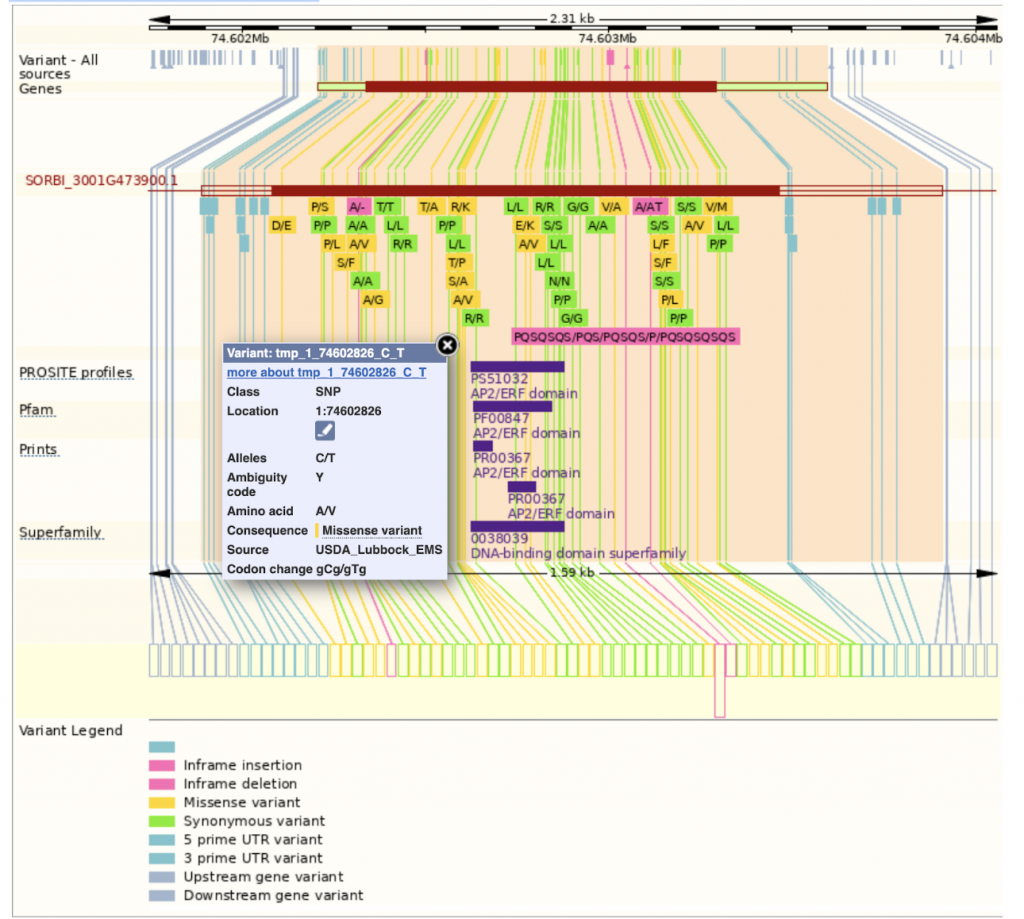Unveiling Gene Expression Dynamics in Sorghum Accessions Upon SCA Infestation
The outbreak of sugarcane aphid (SCA; Melanaphis sacchari) in the Texas Gulf Coast and Louisiana resulted in a loss of 50% of the sorghum crop in over 20 states over the following years. Host plant resistance is an environment friendly and cost-effective strategy to manage this infestation. Previous research has shown that sorghum SC265 plants have low SCA reproduction compared with RTx430, an elite sorghum male parental line, while sorghum SC1345 plants have high reproduction rates when compared to this reference line. Puri and colleagues from the University of Nebraska-Lincoln and the USDA-ARS, investigated the genes that underpin sorghum’s’ resistance to SCA at early and late stages of infestation, using RNA-sequencing and identified transcriptomic responses in leaf tissue after infestation in the three sorghum lines. Data were collected at early time of infestation (6, 24, and 48 h post infestation (hpi)) as well as at late time point (7 days after SCA feeding began). The researchers found that the SCA-resistant line (SC265) had 3,827 upregulated genes closer in time to the point of infestation and 2,076 upregulated genes at the later time point. This was greater than the number of upregulated genes found in RTx430 and SC1345 plants. Co-expression network analysis revealed that the upregulated gene clusters were associated with phenylpropanoid metabolic pathways, secondary metabolic process, oxidoreductase activity, phytohormones, sugar metabolism and cell wall-related genes. The resistant line quickly induces disease resistance proteins (R-proteins), reactive oxygen species,jasmonic acid signaling and monolignol pathway. At the latest time point, resistance was related to activation of sucrose metabolism, phospholipid metabolism and callose synthase genes and proteinase inhibitors. The transcriptome study revealed that approximately 22% of differentially expressed genes had functions that were not yet annotated, and some of these were found in the group of highly expressed genes in the SCA-resistant line presenting an opportunity for further study. The rapid response of the aphid resistant line shows that these sorghum plants are responding early in the aphid infestation process whereas the susceptible sorghum lines lack this ability.
Through temporal transcriptomic profiling, our research has unveiled a set of genes that are involved in sorghum’s defense mechanisms against the relentless sugarcane aphid. This study offers a promising path to integrate candidate genes into sorghum breeding programs, ultimately laying a foundation for the development of sustainable pest management. – Heena Puri
SorghumBase example:

Reference:
Puri H, Grover S, Pingault L, Sattler SE, Louis J. Temporal transcriptomic profiling elucidates sorghum defense mechanisms against sugarcane aphids. BMC Genomics. 2023 Aug 5;24(1):441. PMID: 37543569. doi: 10.1186/s12864-023-09529-5. Read more
Related Project Websites:
Dr. Louis’s lab webpage at the University of Nebraska – Lincoln: https://plant-insect-interactions-lab.unl.edu/



